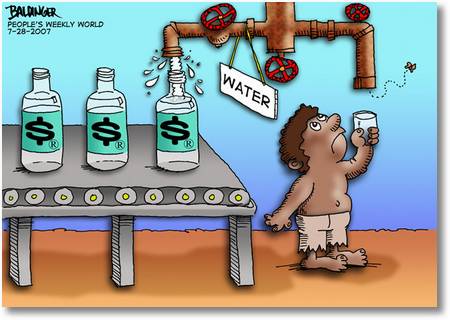In this post, we will delve into the inevitable relationships between provision/delivery of ecosystem services and future environmental change.
Climate Change in Southern Africa
The most direct impact of future climate change in the continent would be changes to the water balance of lakes, wetlands and rivers. More intense, less frequent extreme precipitation events and more frequent dry episodes would fundamentally alter the regime of rivers and generally reduce annual discharge. Climate change will also impact storage capacity of dams and encourages greater evaporative losses (Magadza 1994). Loss of perennial drainage sustaining surface water due to the non-linear response of drainage to changes in rainfall would also mean loss of perennial surface water and increased water scarcity (Wit and Stankiewicz 2006). This will be much more prevalent for rural areas where technology are not readily available . Ironically, these rural areas are, the most dependent on ecosystem services provided by freshwater systems.
Climate Change and freshwater resources in Africa
Changes in the presence, timing and distribution of surface water would no doubt have significant impacts on productivity and thus the ecosystem's capacity to provide and deliver ecosystem services. Modelled increases in dry season flow and increased hydrological variability in Africa will also mean increased importance of irrigation to sustain food production which no doubt will involve dams and river regulations that will have substantial impacts to ecosystem services themselves (Hollis and Thompson 1995). On a cultural and supporting services, the timing and presence of water would dictate recreational activities, navigational routes and eco-tourism. On regulating and provisioning services, knock-on effects to food supply, water supply and aquatic productivity will have immense societal impacts.
In Lake Tanganyika in East Africa, it was found that regional warming and increased surface water temperature reduced water column mixing, nutrient upwelling and entrainment, resulting in decreased aquatic productivity. The lake historically produced up to 40% of animal protein food supply for surrounding countries, but fisheries yield declined by up to 30% since the beginning of the 20th century (O'Reilly et.al. 2003).
Having said that, climate change is by no means the single threatening element to freshwater ES. Lake Chad is probably the most famous case study in the coupling between anthropogenic actions and climate change in driving the collapse of ecosystem services (Salman and Martinez 2015). Rice and cotton irrigation, river diversion/substantial irrigation schemes and declining water quantity/quality from increased use of agro-chemicals all contributed to a dramatic decline in surface area and lake levels alongside climatic changes to inter-annual hydrological variability (Coe and Foley 2001). Food/export production were therefore boosted at the expense of dramatic decline in an entire suite of other ecosystem services:
 |
| Ecosystem services at risk after coupled impacts from agricultural development and climate change at Lake Chad |















